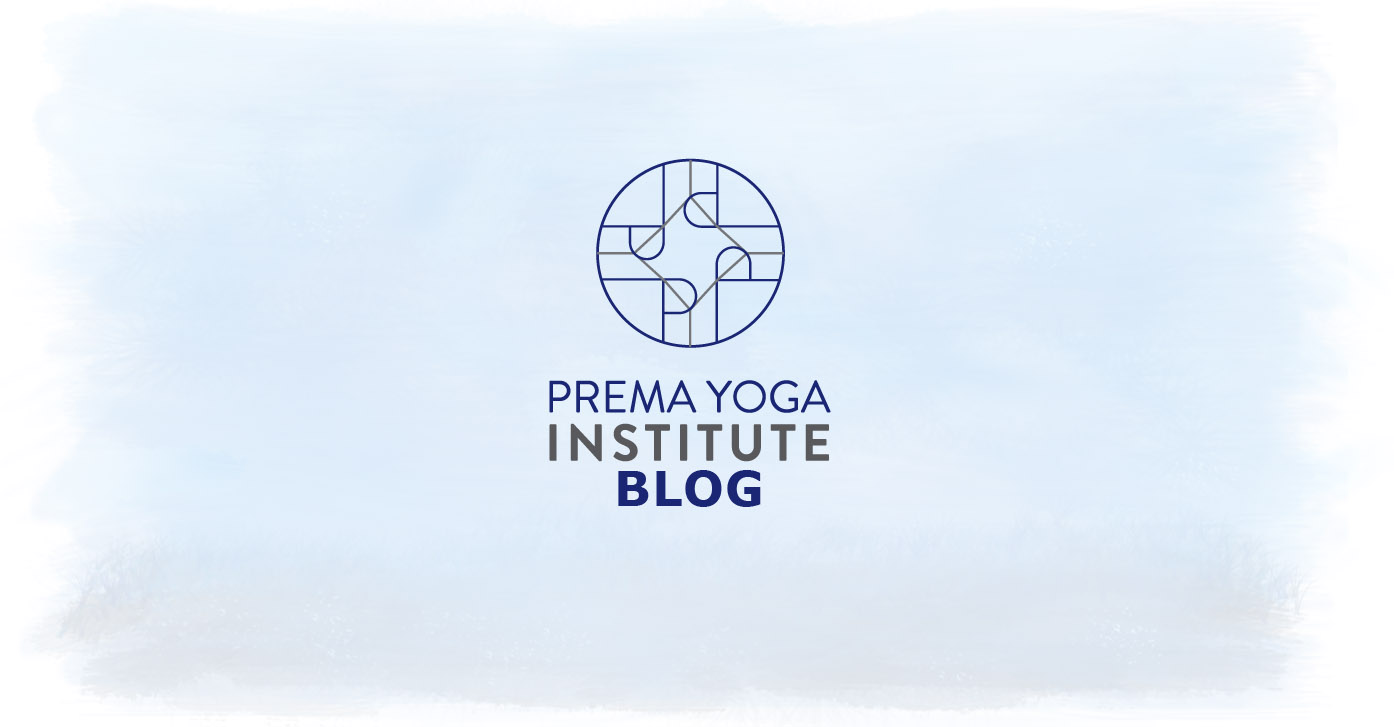
What does Pride mean to me?
As a little boy growing up, my family would always encourage me to be my most authentic self as long as I wasn’t being hurtful to others.
As a little boy growing up, my family would always encourage me to be my most authentic self as long as I wasn’t being hurtful to others. Looking back on my upbringing, I see it meant that I was able to be friendly, curious, unafraid, loving, expressive, creative, open and adventurous. It meant that I was able to self define, it meant that I was able to show the world who I was.
Later on, outside of my home and my family, other people and forces tried to define me. To this moment outside forces are still trying to define me. However, because my foundation was so strong, I know fundamentally that the most important defining voice in my life will always be my own.
Pride means being able to show who you are, without fear, to be able to stand in the light of your truth (Satya), and to know that being your most authentic self, without hurting others, is one of the greatest gifts you can share with the world. Working in the world of therapeutic yoga, I would like to inspire pride in my clients and colleagues because this kind of pride, this freedom, honesty, and self-love practice, can only make you stronger, physically, mentally, emotionally and spiritually. Practice Pride! Happy Pride!
Dorian Shorts
E-RYT 500
YACEP
Yoga Therapist Candidate
DorianShorts.com
Why Your Yoga Teacher Training Should Include “Sound Yoga”
Why Your Yoga Teacher Training Should Include “Sound Yoga”
Our senses help us navigate the world, collecting information and reacting to it. The central nervous system relays messages to our brains about sights, touch, smells, and sounds. Modern lifestyles are often overwhelming to the senses, and we seek yoga to restore the body's natural peace. We think about yoga addressing movement, breath, and mindfulness, but what would it be like to weave sounds into your teachings?
Sound Yoga
Sound yoga is sometimes called mantra yoga and developed before hatha yoga. The ancient yogic scripture, the Vedas, passed from teacher to student via oral tradition. Verses were chanted, linking sound to pranayama. Spoken mantras are manifests of the Sanskrit letters and words symbolizing creation.
Traditionally, yogic teachings reference the noises and silence within as the "inner sound," reached by meditation. It's believed that this experience is the sound of the nadis - the body's energy pathways.
In the present day, sound yoga has healing properties. Our worlds, bodies, and minds all operate at particular vibrations. Sound yoga creates changes in those vibrations to realign ourselves by using sound waves. We then become realigned to our true selves.
Instruments for sound yoga
Incorporating balancing sounds is more complex than simply creating a playlist when teaching yoga. Expertly using sound takes knowledge, practice, and a few tools.
Your voice is the most accessible and powerful tool for creating healing sounds within the body. Humming AUM, reciting mantras, and chanting are all options to engage your students.
Singing bowls are another option. Audible vibrations are created when the singing bowls are rubbed or tapped. The sounds continue as the bowl's rim is rubbed, which resonates through the space and all those in it.
Gongs are metal drums, struck with a short-handled mallet to create sounds that vary from piercing to deep. The manner of the strike determines the sound, allowing for complicated vibrations.
Drums are another option to use sound for healing and are particularly adept at creating a meditative state. The coordination and timing of the drum beat lulls the listener into a state of relaxed mindfulness.
Incorporating sound into your yoga teachings
There is ample opportunity to play with sound as you teach. You may also find that many types of sound instruments easily weave into a yoga session.
Mantras, chants, and opening practice with AUM help your students ground themselves and solidify the intention of the practice. These reinforcing sounds also serve to conclude a yoga session.
You may also choose to weave a physical instrument into your teachings, or create an entire yoga class devoted to sound. Part of your students' sound experience is building a bridge between the sound and its meaning, history, and associated mantras and stories.
A sound yoga experience has the distinct advantage of providing your students with an auditory focus, relieving them of any distractions that often accompany pranayama and meditations. There are many reasons to encourage your students to listen to their bodies, and sounds help to guide the way.
Searching for a Registered Yoga School that Provides “Sound Yoga” Teacher Training? Check out Prema Yoga Institute’s Sound Yoga Therapy Training
While you’re here, we’d love to invite you to consider our Online (Accredited) courses at Prema Yoga Institute. Prema Yoga Institute is based in New York City, but is now available online with interactive trainings through 2022. (And this link goes directly to sign up for Sound Yoga Therapy.)
PYI is an accredited program based in New York city, teaching students around the globe through online classes. Contact us today to learn more about how we can help you advance your yoga practice and teaching!
If you found this information useful, visit our Blog often or subscribe to our Mailing List for similar content.
Why Choosing 300-hr Yoga Teacher Training that counts towards a Yoga Therapy Certification is a Wise Investment
Why Choosing 300-hr Yoga Teacher Training that counts towards a Yoga Therapy Certification is a Wise Investment
Teaching yoga is a broad-stroke approach to generalized wellness, fitness, and spiritual health. In contrast, Yoga Therapy is a science-based method to apply yogic-based principles to an individual's specific health challenges. Continuing your education after earning your RYT200 can take you down the path towards becoming a Certified Yoga Therapist.
Why become a Yoga Therapist
You may have a calling to specialize your yoga teaching career beyond group classes and weekend workshops. Yoga Therapy allows you to develop one-on-one relationships with your clients to address their specific health concerns. Extensive knowledge is needed in two primary areas: one, learning the human body's anatomy, physiology, and many disease processes. And two, safely use yogic traditions and principles to address illness, disease, and changes within the body and mind.
The Yoga Therapist has a place alongside health care workers and modern medicine. As the importance of holistic care evolves, the need for Yoga Therapists increases. Addressing personal health challenges can then be cared for from many angles.
Building your education to become a Yoga Therapist
The road to becoming a Yoga Therapist is five times as long as the first yoga teacher training course, the RYT200. This process seems daunting but can be broken down into steps that enhance your career as you study.
The first step is the RYT200 certification. That is the preliminary requirement to continue more advanced yoga teacher training, only one of which is the Yoga Therapy program. After completing the RYT200, you can teach as you pursue continuing education.
Then consider enrolling in an RYT300 program focusing on skills and knowledge related to becoming a Yoga Therapist. This intermediate step moves you closer to advanced certifications. At the same time, the RYT300 certification and your RYT200 certification propel you to RYT500 status. Your teaching experiences and advanced coursework boost your career and help serve your community.
Completing your RYT300 also gives you the credentials and experience to become a yoga teacher of future teachers. This professional career growth may afford you the resources and time to further your education even more.
Finding the best RYT 300 program
The options for continuing your advanced yoga teacher trainings are plentiful, with many accredited online courses available. The content and primary focus of the RYT300 training will benefit your Yoga Therapy path when a few important principles are met.
Remembering that yoga and Yoga Therapy are becoming more individual-focused, modules including Yoga Therapeutic Essentials, Ayurveda, and how yoga integrates with health care are the top priorities in an RYT300 course.
Yoga Therapeutic Essentials address the building blocks of yoga gently to address injuries, joints, and muscles. There is a focus on anatomy, and supporting mental health during injury and disease. Ayurveda is the ancient approach to holistically helping the body with diet, movement, meditation, and pranayama. Course work addressing advanced anatomy and physiology study builds the foundation for a deeper understanding of disease processes.
The path of your yoga career need not be in a straight line, nor at a specified pace. Completing your RYT300 gives you credentials to use immediately to further your studies.
Interested in Advanced Yoga Teacher Trainings?
While you’re here, we’d love to invite you to visit Prema Yoga Institute (Registered Yoga School) for in-person or online accredited training programs in this field. Prema Yoga Institute provides in-person training in New York City, but is now available online with interactive trainings through 2022.
PYI is an accredited, registered yoga school (RYS) based in New York city, teaching students around the globe through online classes. Contact us today to learn more about how we can help you advance your yoga practice and teaching!
If you found this information useful, visit our Blog often or subscribe to our Mailing List for similar content.








